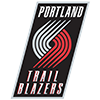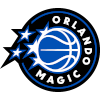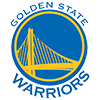This article is part of our NBA Injury Analysis series.
Two of the top players in the NBA are currently sidelined with lower extremity muscle strains. The Thunder has played the last two games without Durant as he sits with a left hamstring strain, while Paul has missed three of the last five outings with a nagging groin strain. Muscular strains are common in the NBA, with over 50 reported incidences so far this season. Given the frequency of the injury, let's take a detailed look at what is going on in the body of Durant, CP3 and countless others.
The skeletal muscle of the human body is considered an elastic material, capable of stretching and responding to various amounts of applied force. However, each muscle, whether it is one of the hamstrings, the calf or groin muscles, has what is known as an elastic limit or yield point. If a muscle is stretched or forced past the yield point, deformation of the tissue occurs. This is more commonly known as a strain.
Muscle strains are assigned a clinical grade based on the severity of the associated damage. The least severe or minor strain is a Grade I injury. In these incidences, microtearing of the injured tissue occurs though the affected individual often experiences little to no loss of function. A moderate, or Grade II, strain involves damage to actual muscle fibers and is often referred to as a partial tear. Anything given a Grade III or higher is considered severe and the tear is
Two of the top players in the NBA are currently sidelined with lower extremity muscle strains. The Thunder has played the last two games without Durant as he sits with a left hamstring strain, while Paul has missed three of the last five outings with a nagging groin strain. Muscular strains are common in the NBA, with over 50 reported incidences so far this season. Given the frequency of the injury, let's take a detailed look at what is going on in the body of Durant, CP3 and countless others.
The skeletal muscle of the human body is considered an elastic material, capable of stretching and responding to various amounts of applied force. However, each muscle, whether it is one of the hamstrings, the calf or groin muscles, has what is known as an elastic limit or yield point. If a muscle is stretched or forced past the yield point, deformation of the tissue occurs. This is more commonly known as a strain.
Muscle strains are assigned a clinical grade based on the severity of the associated damage. The least severe or minor strain is a Grade I injury. In these incidences, microtearing of the injured tissue occurs though the affected individual often experiences little to no loss of function. A moderate, or Grade II, strain involves damage to actual muscle fibers and is often referred to as a partial tear. Anything given a Grade III or higher is considered severe and the tear is generally complete. These painful injuries are accompanied by a loss of both stability and function and in some cases require surgery to fix.
Once a muscle has been strained, the body's natural healing response kicks in. The process is complex and occurs in multiple stages. The inflammatory phase is the initial response and is marked by swelling and clotting reactions at the site of injury. The proliferative phase is next and is the beginning of the body's actual repair work of the damaged tissue. Specialized cells begin restoring the damage using protein fibers, including collagen and elastin, to form scar tissue. This phase requires a considerable amount of time and patience from the injured athlete.
The final phase is the remodeling phase, which varies in length depending on the severity of the damage and the muscle involved. During remodeling, collagen fibers located in the newly formed scar tissue are repeatedly broken down and remade. This repetitive process improves the strength of the scar tissue so that it will ultimately resemble healthy muscle tissue.
Unfortunately, the remodeling phase occurs in a haphazard fashion as the new tissue is randomly laid down. This unsystematic approach can have a negative impact on the athlete's return to play, making an appropriately designed rehab process essential to recovery. Still, even the most detailed treatment protocol can't guarantee the new tissue will be 100 percent and the risk of re-injury is often elevated once the athlete returns to the court.
The nature of basketball only complicates things further. The sport demands that the muscles of the legs be able to withstand high amounts of force associated with running, jumping and making quick starts and stops. As a result, basketball players that suffer hamstring, groin and calf injuries often need longer periods of rest and are often more susceptible to re-injury.
Like the players themselves, fantasy owners who utilize Durant and Paul have to exhibit patience. A conservative approach to treatment at this stage of the season will allow these All-Stars to return closer to full strength and reduce the chances of them yo-yoing in and out of the lineup. A few missed games early in the season are easier to stomach than a prolonged absence or an elite player sidelined for the postseason. Durant has already hinted he's feeling better but understands a cautious approach is best. He will miss two more games before being reevaluated prior to Friday's game against the Knicks. Anthony Morrow will continue to start in his place and the daily value for Russell Westbrook remains considerably high until KD returns.
Paul's status remains less clear and his history of lower-leg problems could be complicating the situation. Paul has battled multiple strains to his hamstring, hip flexor and groin throughout his career. The team continues to consider him day-to-day but no firm timetable for his return has been established. Fortunately, the Clippers don't play a game until Thursday, giving Paul an extended bit of rest. While it should be enough to get him back in uniform, it does make him a bit of a precarious play in weekly formats.
Fast Breaks
Wilson Chandler
The Nuggets will be without Chandler for the rest of the season after it was discovered he suffered a tear of the labrum in his right hip. The issue will be addressed surgically and he should be able to return for next year's training camp. This marks the second labrum tear of Chandler's career, as he tore the labrum in the opposite hip while playing in China during the lockout shortened 2011-212 season.
Anthony Davis
Davis returned to the New Orleans lineup on Sunday after missing two games with a hip contusion. While the injury wasn't considered serious, it served as a reminder that the Brow has been somewhat prone to these minor bumps and bruises during his professional career. He's yet to play 70 games since being drafted and is at risk for being overworked this season with the Pelicans battling multiple injuries across the board. He's far too valuable to keep on the bench but fantasy owners shouldn't be surprised if he misses a few more games somewhere down the road.
Meyers Leonard
The Portland big man suffered a dislocated left shoulder last week and has been ruled out indefinitely. His focus is centered on improving stability and functionality of the joint by treating the surrounding musculature. Keep him sidelined for the foreseeable future.
Victor Oladipo
Oladipo suffered a concussion last Wednesday and is working his way through the league-mandated protocol. Concussions affect each individual differently so pinpointing an exact return is difficult. However, players who have suffered a concussion this season have missed an average of nine days, suggesting Oladipo could miss additional time. With Orlando playing just two games this week, I'd look elsewhere if I were invested in Oladipo.
Klay Thompson
The Warriors remain tight-lipped on the nature of Thompson's back injury and his availability for Tuesday's game against the Raptors remains in doubt. Hopefully the injury is not significant and Thompson will be back quickly. Tread cautiously here and hope it resolves itself quickly.












